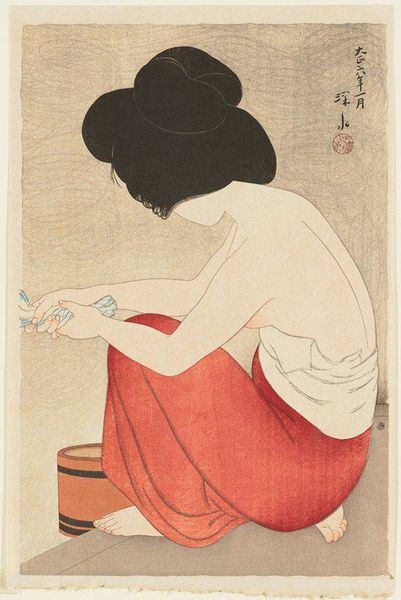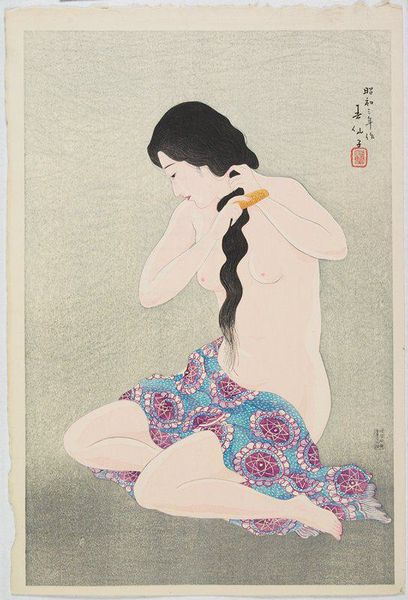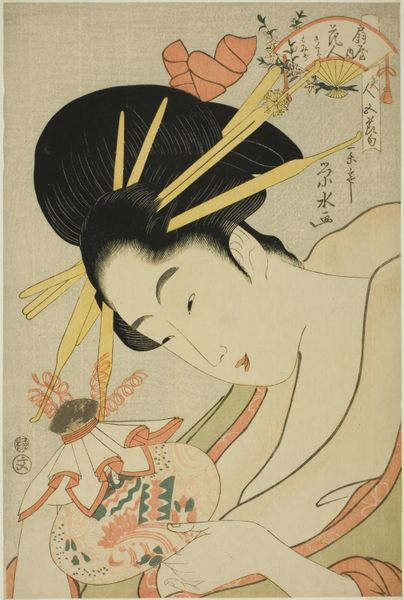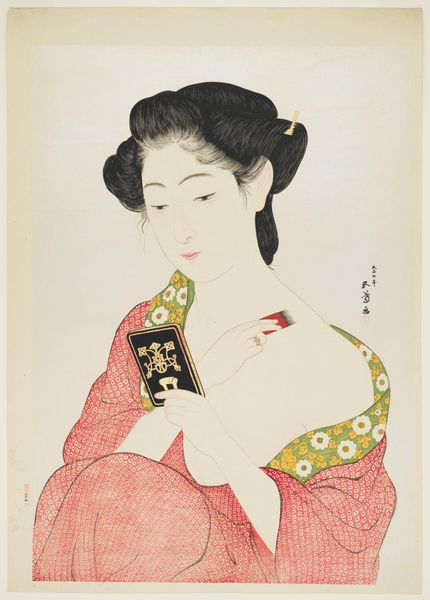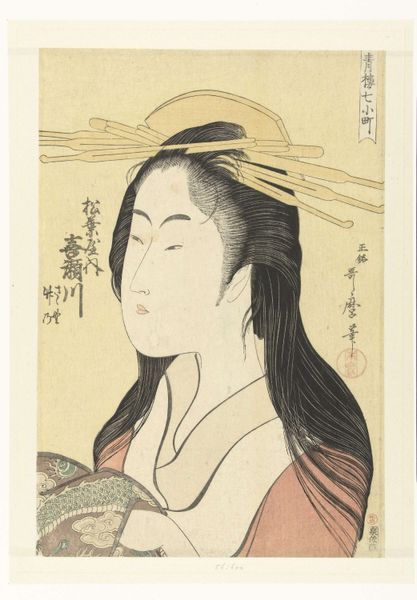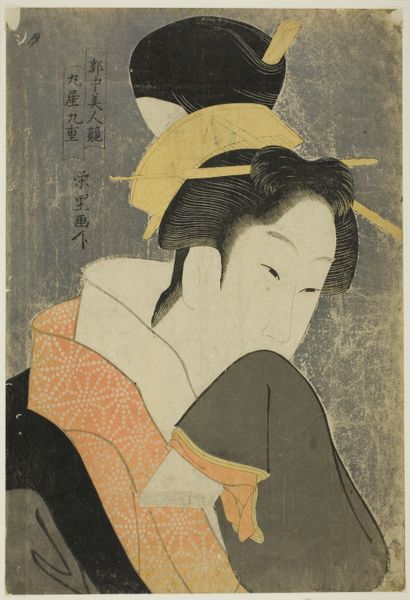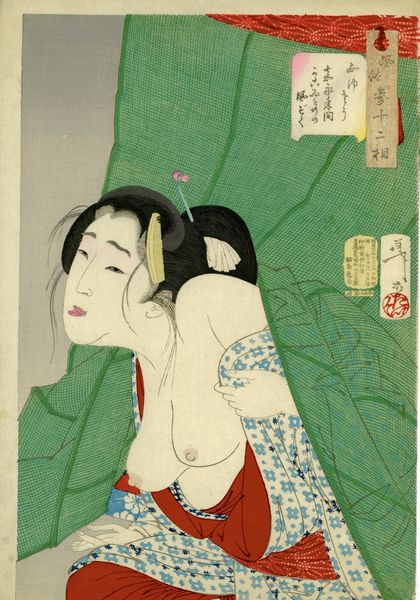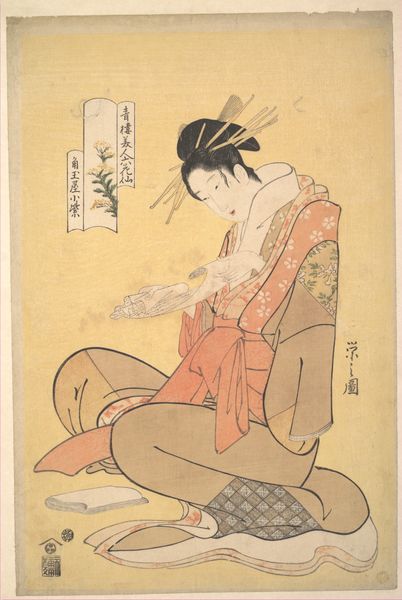
silk, print, paper, ink, woodblock-print
#
portrait
#
silk
# print
#
asian-art
#
ukiyo-e
#
figuration
#
paper
#
ink
#
woodblock-print
#
line
#
portrait drawing
#
genre-painting
Dimensions: height 387 mm, width 254 mm
Copyright: Rijks Museum: Open Domain
Curator: This is “Haren wassen,” or “Washing Hair,” by Kitagawa Utamaro, dating from approximately 1800 to 1805. It’s a woodblock print in ink on paper and is currently held at the Rijksmuseum. Editor: My first impression is of a quiet intimacy. The figure is so absorbed in her task, seemingly unaware of being observed. It has this incredibly serene feel, despite its somewhat mundane subject matter. Curator: The power of ukiyo-e prints often lies in depicting these everyday moments. The genre emerged during the Edo period in Japan, when there was relative peace and economic prosperity. But how do we interpret these representations of women today? There are arguments about exploitation but also about the agency within those depictions. Editor: Exactly. I find myself drawn to consider this image through the lens of contemporary feminist art theory. On one hand, we could examine it as participating in a male gaze, presenting women for consumption. Yet, isn't there also something compelling in the self-possession the subject exudes? We could argue it challenges patriarchal structures by depicting the female body in an empowering, self-caring manner. Curator: That ties into the complex social history of prints like this one. They were accessible and affordable, making art available to a wider public, a public that certainly included women. So what roles did women have in commissioning, owning, or even producing these images? This print may have even been aimed at women as a piece of advice. Editor: Precisely. Consider how hair-washing and care rituals in many cultures represent self-love, renewal, even resistance. By showcasing this intimate act, Utamaro subtly elevates women's daily lives, reminding us that female-centric art is more than decoration—it's a crucial site of representation and narrative power. Curator: Thank you for that nuanced perspective. Considering both the socio-political context and the intimate detail captured by Utamaro's print allows us to really dig deep. Editor: It reveals a world that might otherwise be lost to us, urging us to ask ourselves some hard questions about identity and the act of observation itself.
Comments
No comments
Be the first to comment and join the conversation on the ultimate creative platform.


